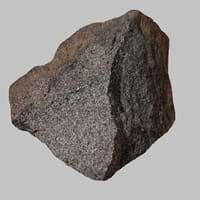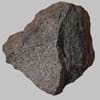Definition
Obsidian is a naturally occurring volcanic glass formed as an extrusive igneous rock. It is produced when felsic lava extruded from a volcano cools rapidly with minimum crystal growth
Appinite is an igneous rock in which the crystals are so fine grained that individual minerals cannot be easily distinguished
Discoverer
Obsius
Unknown
Etymology
From Latin obsidianus, misprint of Obsianus (lapis) (stone) of Obsius
From the variety of Lamprophyre Greek lampros bright and shining + porphureos purple
Class
Igneous Rocks
Igneous Rocks
Sub-Class
Durable Rock, Medium Hardness Rock
Durable Rock, Medium Hardness Rock
Other Categories
Opaque Rock
Coarse Grained Rock, Fine Grained Rock, Opaque Rock
Texture
Glassy
Porphyritic
Color
Black, Blue, Brown, Green, Orange, Red, Tan, Yellow
Black, Bluish - Grey, Brown, Dark Greenish - Grey, Green, Grey
Durability
Durable
Durable
Scratch Resistant
Yes
Yes
Appearance
Shiny
Dull, Banded and Foilated
Interior Uses
Decorative Aggregates, Interior Decoration
Decorative Aggregates, Homes, Interior Decoration
Exterior Uses
Garden Decoration
Paving Stone, Garden Decoration, Office Buildings
Other Architectural Uses
Not Yet Used
Whetstones
Construction Industry
Arrowheads, Cutting Tool, Knives, Scrapers, Spear Points
As Dimension Stone, Cement Manufacture, for Road Aggregate, Making natural cement, Manufacture of Magnesium and Dolomite Refractories
Medical Industry
Surgery
Taken as a Supplement for Calcium or Magnesium
Antiquity Uses
Artifacts, Jewellery
Artifacts, Monuments, Sculpture, Small Figurines
Commercial Uses
Creating Artwork, Mirror, Used in aquariums
An Oil and Gas Reservoir, As a Feed Additive for Livestock, Gemstone, Metallurgical Flux, Production of Lime, Soil Conditioner
Types
Fireworks Obsidian, Mahogany, Sheen Obsidian, Snowflake obsidian and Velvet Peacock Obsidian
Not Available
Features
Blocks negativity, Helps to protect against depression
Always found as volcanic pipes over deep continental crust, Host rock for Diamond, Is one of the oldest rock, Surfaces are often shiny
Archaeological Significance
Monuments
Not Yet Used
Used
Famous Monuments
Not Applicable
Data Not Available
Sculpture
Not Yet Used
Used
Famous Sculptures
Not Applicable
Data Not Available
Figurines
Not Yet Used
Used
Formation
When the lava is released from volcano, it undergoes a very rapid cooling which freezes the mechanisms of crystallization. The result is a volcanic glass with a uniform smooth texture.
The formation of Appinite takes place deep beneath the Earth’s surface at around 150 to 450 kms, and are erupted rapidly and violently.
Mineral Content
Not Available
Amphibole, Carbonate, Garnet, Micas, Olivine, Phlogopite, Pyroxene
Compound Content
Aluminium Oxide, CaO, Iron(III) Oxide, FeO, Potassium Oxide, MgO, MnO, Sodium Oxide, Phosphorus Pentoxide, Silicon Dioxide, Titanium Dioxide
Aluminium Oxide, NaCl, CaO, Iron(III) Oxide, FeO, Potassium Oxide, MgO, MnO, Sodium Oxide, Silicon Dioxide, Titanium Dioxide
Types of Metamorphism
Burial Metamorphism, Cataclastic Metamorphism, Contact Metamorphism
Burial Metamorphism, Cataclastic Metamorphism, Contact Metamorphism, Hydrothermal Metamorphism, Regional Metamorphism
Types of Weathering
Biological Weathering, Chemical Weathering, Mechanical Weathering
Chemical Weathering, Mechanical Weathering
Types of Erosion
Chemical Erosion, Coastal Erosion, Glacier Erosion
Chemical Erosion, Water Erosion, Wind Erosion
Grain Size
Not Applicable
Fine to Coarse Grained
Fracture
Conchoidal
Conchoidal
Porosity
Very Less Porous
Very Less Porous
Luster
Vitreous
Subvitreous to Dull
Compressive Strength
Not Available
Cleavage
Non-Existent
Conchoidal
Toughness
Not Available
Not Available
Specific Gravity
2.6-2.7
2.86-2.87
Transparency
Translucent
Translucent to Opaque
Density
2.6 g/cm3
2.95-2.96 g/cm3
Specific Heat Capacity
Not Available
Resistance
Heat Resistant, Impact Resistant
Heat Resistant, Impact Resistant
Deposits in Eastern Continents
Asia
Afghanistan, Indonesia, Japan, Russia
Russia
Africa
Kenya
Angola, Botswana, Cameroon, Ethiopia, South Africa
Europe
Greece, Hungary, Iceland, Italy, Turkey
England, Hungary, Iceland, United Kingdom
Others
Not Yet Found
Antarctica, Greenland
Deposits in Western Continents
North America
Canada, Mexico, USA
Canada, Mexico, USA
South America
Argentina, Chile, Ecuador, Peru
Argentina, Colombia, Ecuador
Deposits in Oceania Continent
Australia
New Zealand
New South Wales, New Zealand, Queensland, South Australia, Western Australia
All about Obsidian and Appinite Properties
Know all about Obsidian and Appinite properties here. All properties of rocks are important as they define the type of rock and its application. Obsidian and Appinite belong to Igneous Rocks.Texture of Obsidian is Glassy whereas that of Appinite is Porphyritic. Obsidian appears Shiny and Appinite appears Dull, Banded and Foilated. The luster of Obsidian is vitreous while that of Appinite is subvitreous to dull. Obsidian is available in black, blue, brown, green, orange, red, tan, yellow colors whereas Appinite is available in black, bluish - grey, brown, dark greenish - grey, green, grey colors. The commercial uses of Obsidian are creating artwork, mirror, used in aquariums and that of Appinite are an oil and gas reservoir, as a feed additive for livestock, gemstone, metallurgical flux, production of lime, soil conditioner.










